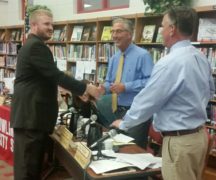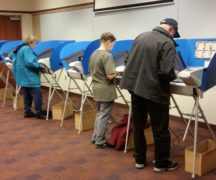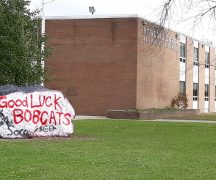By JAN LARSON McLAUGHLIN
BG Independent News
More than 100 citizens have signed up to help find the best path forward for Bowling Green City Schools.
An email went out Friday to the 117 people who have agreed to serve on two task forces created to study future school facilities and how they will be financed.
“Both are big,” school finance consultant David Conley said of the task forces. But he is not concerned about the citizen groups being so large that they are cumbersome or complicate the process.
“As long as the participants involved are sincere,” the size of the task forces will not be unmanageable, Conley said on Saturday. “It’s only difficult if people aren’t sincere about the process.”
Conley said he has worked with task forces numbering more than 100 people in two other school districts – Rootstown and Lexington. Like Bowling Green, those school districts had to make decisions about the future of multiple buildings.
The notice sent out last week suggested the first gathering be a joint meeting of both the facilities and financial task forces on Aug. 28, at 7 p.m. The primary goals will be to set up ground rules for how the task forces will operate, review the purposes of the task forces, and establish an estimated timeline.
Conley will be serving as facilitator of the financial task force. A facilitator for the facilities group has not yet been selected. Conley is searching for a person with general experience in construction, who is not a resident of the Bowling Green School District.
“It would be helpful if it’s someone who can leave their feelings out of it,” he said. “I’m dead set on finding a good candidate.”
Conley predicted the process – for determining the future of school facilities and how they will be paid for – will not be quick.
“I fully anticipate this being a year,” he said. “There’s a lot of work to be done. A lot of clarity needed. It’s absolutely worth it.”
Not only will the task forces need to make decisions on multiple building issues, but the district also needs to overcome the divide that formed during the last two levy attempts, Conley said. The goal of the task forces is to work together to find a solution.
“They have to be sincere and genuine about working toward a common goal,” he said.
The ground rules of the task forces will require all members to focus on a common cause. Disagreement will be welcomed. However, if a member is disruptive and trying to undermine the process, that person can be asked to leave the group, Conley said.
The task forces will establish their own meeting schedules, which will include at least monthly meetings.
“They might actually want to meet more frequently,” he said.
For those who can’t attend the task force meetings, the gatherings will be made available via Facebook Live for either simultaneous or delayed viewing.
The facilities group will study the condition of the district’s buildings now and consider future curriculum requirements. Ultimately, the group will decide if the district should renovate old buildings, build new schools, or a combination of the two.
The facilities task force will take guided tours of the five Bowling Green school buildings, hear from state experts about facilities assessments done on the buildings, and visit other Ohio districts that have renovated old buildings and constructed new schools.
The task force will work with the district’s architect on proposals and come up with cost estimates. That information will then go to the financial task force, which will figure out how to pay for the building proposal.
The financial group will look at all forms of funding – earned income tax, traditional income tax, property tax, state funding, corporate contributions, and even go-fund-me sites.
The financial task force will also consider how much the community can afford, and could possibly come up with a cap for the facilities task force.
The recommendations from both groups will be presented to the school board to be placed on the ballot for voter approval.
“This will be a community-driven process,” Board President Jill Carr said last month. “The board will step back.”
Though the administration and board will make requested information available to the task forces, they will take a back seat in the process, Superintendent Francis Scruci said last month.
The goal is to come up with a “solution that the community can support,” Scruci said. “Regardless of which side you stood on in November and May.”
The district is at a “critical juncture,” the superintendent said, urging the community to work together.





